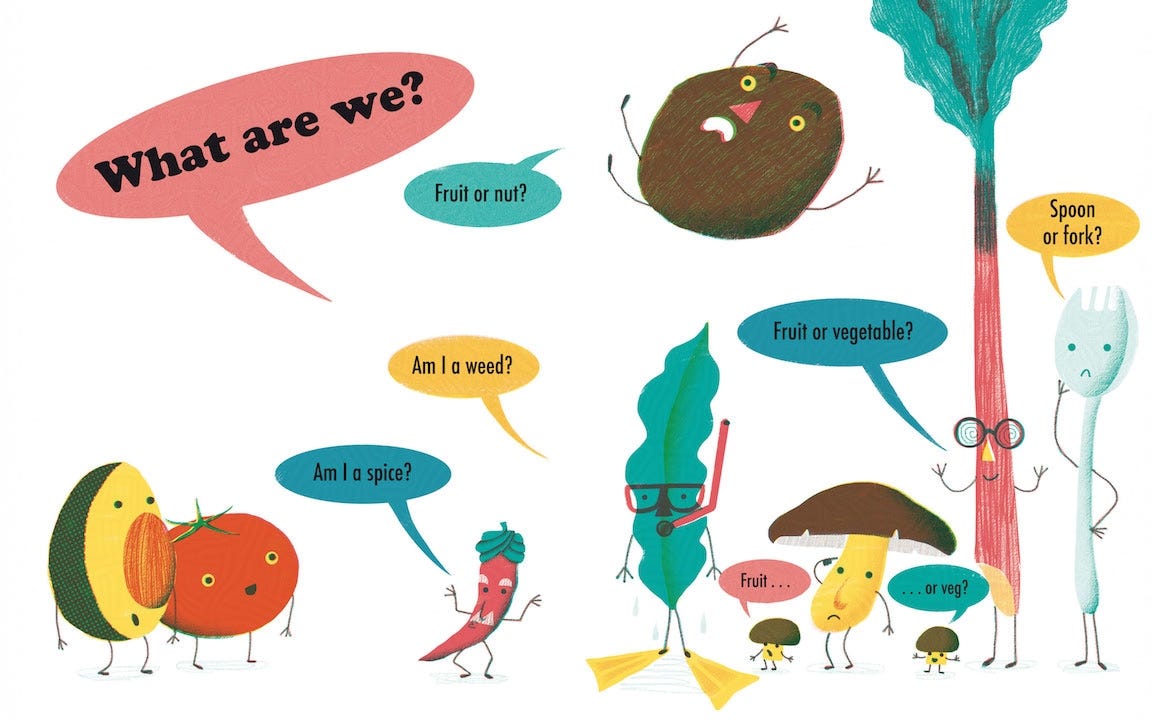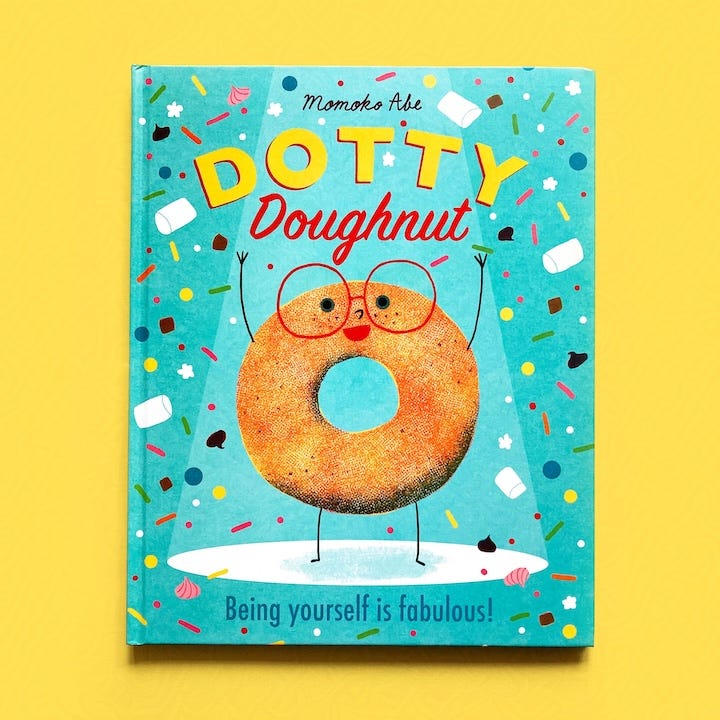Since You Asked #1
On creating characters that are essentially destined to be eaten.
This is a taster Q&A post, which I’m planning to write for my paid subscribers in the future. So if you have any questions you want to ask me (keep them to about being a children’s author-illustrator or about making children’s books please), send them my way in DM here or on Instagram.
To celebrate the upcoming publication of my fourth authored book, Dotty Doughnut (Orchard Books), I asked my subscribers if they have any particular questions about making of this book.
Sadhbh Devlin asked:
I'd love to know more about creating characters that are essentially destined to be eaten. Maybe yours don't have that fate (I'm looking forward to reading and finding out!), but I've been trying to develop a story featuring food characters and I keep realising that scenarios I'm putting them in mean they'd very quickly… cease to exist because they're food. It's tricky! Do you have rules around that for yourself?
This is a great question! Been there, done that. I do love writing stories with food characters. I wouldn’t call the below “rules” but these are what I usually do when I writing a story for a food character. I do:
Not make the story about “being food”.
Focus on the journey not the destination.
Avoid the ultimate fate, or just imply it but don’t show it.
I use food characters but none of my stories are about being food. For example, Avocado Asks is about identity crisis, Pearl and Her Bunch is about non-traditional families, and Dotty Doughnut is about being yourself. And, as you guessed, most of my characters don’t meet the fate of being eaten.
There are so many ways a food-character narrative could take. For example, in the very popular The Runaway Pea by Kjartan Poskitte and Alex Willmore, the titular pea ends up in a compost heap and the compost is used to grow new peas - a kind of resurrection ending so to speak (pea-rfect for Easter?). Personally, I prefer to avoid mentioning their fate because, you guessed it, it’s tricky. In the ending of the very first draft of Avocado Asks, Tomato took Avocado, who was looking for a place it could belong, to the bakery counter so they could be a sandwich together…
My editor pointed out that the ending sounded like a suicide pact. Point taken... As a solution, I completely changed the ending to one where they meet more food like them.
Having said that, with Dotty, I did something different. Dotty’s goal in the story is indeed “being eaten” although I didn’t write it in those exact words. I think there’s nothing wrong with food wanting to be eaten. They would prefer that to being thrown away (right?) and children would get that.
But I always make my character’s journey the main focus of my story so that they don’t get to the destination (i.e. being eaten) too quickly. For example, 10 out of 14 spreads of Dotty Doughnut were spent on her learning journey. (🚨SPOILER ALART🚨) Dotty almost meets her fate (i.e. being eaten by the girl) on the very last spread. She gets picked by the girl but I intentionally ended the story there. Obviously we know what’s going to happen next so I don’t need to show it. It still implies that her dream has come true.
Thank you, Sadhbh, for your question! And good luck with your story ideas!
Momo x
My next authored picture book, Dotty Doughnut (Orchard Books) will be out on the 27th of March. It’s now available for pre-order
Also, my next collaboration picture book, It’s Behind You! (Andersen Press) written by Jeanne Willis will be out on the 3rd of April. It’s also available for pre-order.









Thank you so much for your thoughtful answer to my question, Momoko. It's so helpful. And I love the idea of implying whats going to happen without explicitly ending their journeys in someone's mouth! I love a 'dark' picturebook, but you always have to be careful not to go too far 😅
This is wonderful, I’ve always wondered how to write food characters without getting too dark. Congrats on the upcoming books! 🍩